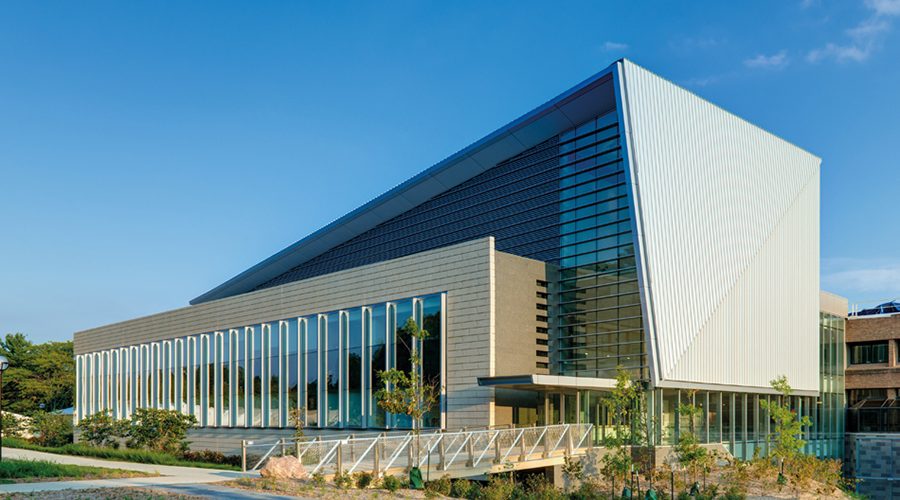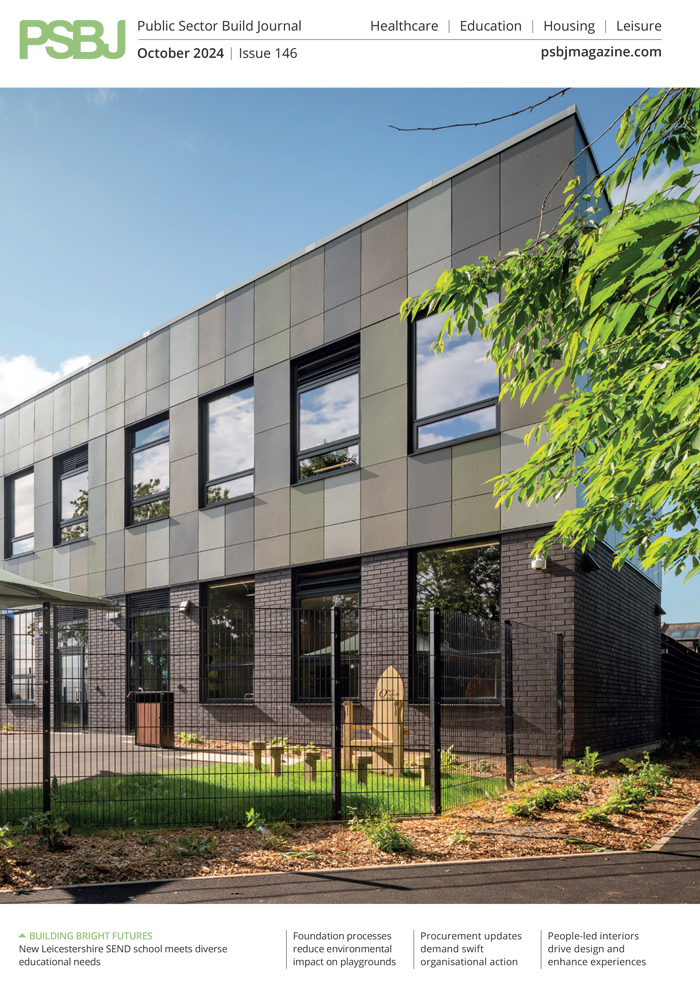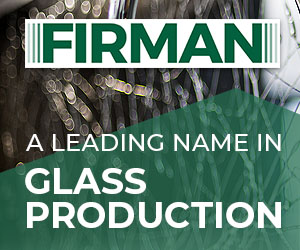Andy Moul, Technical Manager at Construction Specialties (CS), looks at factors which need to be taken into consideration when specifying external louvres as part of a building’s ventilation solution.
Construction Specialties
When it comes to the design and delivery of public buildings in a post-pandemic world, the importance of maintaining a healthy indoor environment for occupants and visitors cannot be understated.
Adequate ventilation is part of a mitigation strategy for all multi-occupant buildings, but its design is a balancing act between delivering a high quality of air and thermal comfort for building users, whilst maintaining energy-efficiency standards and noise control. Ease of maintenance and long-term operational costs of running the ventilation systems add to the complexity.
As a means of providing airflow into a building, external louvre systems have an important part to play in ventilation strategies and their performance characteristics need to be taken into consideration alongside aesthetic requirements.
Louvre types
There are three main types of louvre systems available, offering different performance characteristics. Simple and economical, screening louvres utilise a flat-blade profile to provide airflow into a building and some rain defence. These are typically used at the top of buildings to hide unsightly HVAC systems or perhaps in car parks to allow for ventilation of exhaust fumes.
Ventilation louvres are chosen when airflow is a key consideration. They may provide adequate rain defence in light rain, but their performance generally falls short in wind-driven rain conditions.
When potential rain penetration is an issue, specifiers should consider rain defence louvres with integral water collection and drainage. These systems are designed to stop wind-driven rain entering a building, whilst allowing efficient passage of air. This is achieved through either a complex single-blade profile extrusion to give a slim louvre depth or a deeper, multi-bank system.
Performance
Traditionally, louvres were specified based on a simplistic, physical ‘free area’, which simply relates to the gaps between the blades in the louvre design that facilitate airflow, but this does not quantify airflow efficiency. Therefore, specifiers should be placing more importance on the design pressure drop and aerodynamic airflow efficiency. This is a true indicator of a louvre’s performance, which ensures mechanical equipment has the required airflow to optimise function.
When it comes to the selection of a rain defence louvre system, third-party test data should be examined to ensure a project’s functional requirements will be met. BS EN 13030:2001 standard is used for evaluating louvre’s effectiveness against rain penetration, as well as its airflow characteristics, and enables specifiers to directly compare the performance of the different weather louvre systems available.
All performance considerations, such as required airflow, the maximum acceptable pressure drop and the degree and depth of acceptable water penetration, should, therefore, be balanced with the building’s envelope design – hence the need for a ‘form and function’ approach.
Other things to consider
A site’s location and the position of louvres on a building is another important consideration in louvre selection, as exposure to prevailing weather conditions – in particular wind direction – will affect the amount of potential wind-driven rain penetration. In addition, Building Regulations Approved Document F recommends that ventilation intakes are positioned away from the direct impact of air pollutant sources, such as parking areas, loading bays or busy roads, while exhaust locations should be chosen or designed to minimise re-entry of exhaust air into the building.
Aesthetics
Louvres are available in a wide range of designs, finishes and colours to suit any application. A louvre system that uses hidden mullions, for example, gives continuous, architectural lines because the support system is behind the blades, making the mullions almost invisible. Louvres with visible mullions, on the other hand, can be used as a design feature to line up with joints between exterior wall panels or with windows. These systems are typically supplied in a pre-fabricated modular form and are available in designs offering horizontal or vertical blade configurations.
Other design options include models utilising varying blade depths for added interest, or hidden behind decorative features such as perforated panels – which can also act as bird screens. Specification should always be supported with performance test data as such features can potentially increase louvre’s resistance
to airflow.
Desired looks
CS’ range of architectural louvre systems provide creative freedom to specifiers without sacrificing airflow performance. High strength and lightweight, the CS louvre range is superbly effective for ventilation, screening and rain protection.
Due to their complex, extruded blade design, CS rain defence louvre systems are thinner than those relying on multiple banks of simpler blades and additional drainage, whilst offering some of the best combination of rain defence and airflow performance in the market.
An excellent way to address air quality and ventilation challenges in all multi-occupant public sector buildings, louvres can improve a building’s energy efficiency, lowering power consumption and thus reducing carbon emissions. They can also have a positive, creative impact on a building’s exterior design.











